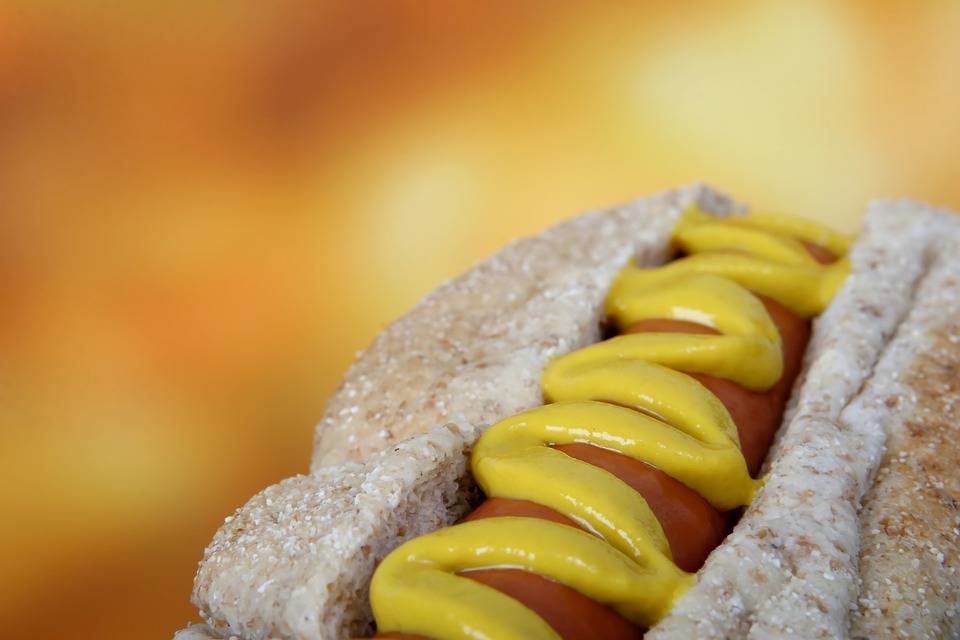The history of mustard extends back a couple of millennia. Today it is one of the most popular spices used in the cuisines of many nations. In general, mustard is a mixture of mustard seeds, water, vinegar and various additives. The taste of mustard depends on additives and plant seeds (white, black, brown (saperda/Indian) or abyssinian mustard)
In Europe, the most popular is “Dijon” mustard with white wine and black mustard seeds, produced since the XIV century. The most liquid mustard is “American” with white mustard seeds with a lot of sugar. “Bavarian” mustard is prepared with coarse-grained seeds and caramel syrup. The composition of “English” mustard is crushed seeds are mixed in apple juice or cider. In Italy, people like “Fruit” mustard prepared with whole or large pieces of apples, oranges, pears, and others, that are added into mustard powder, white wine, honey and spices. Finally, there is a hot, strong and familiar to us “Saperda mustard,” the preparation technology of which, as an example, will be discussed further.
The production of mustard consists of the following stages:
- preparing saline solution;
- preparing sugar syrup;
- preparing marinade;
- preparing mustard itself.
Components (mustard powder, peanut flour, salt and sugar) are pre-sieved through sieves with a mesh size of about 1mm. The sieves are equipped with magnets for trapping large lumps of mustard powder and peanut flour – after which additional crushing is required. The additional crushing improves the “swelling” properties.
Sugar syrup is prepared from sugar and water in proportion nine to five, boiled for half an hour to prevent the development of mucosal bacteria.
The saline solution is prepared from salt and water in equal proportion one to one is brought to boil and then filtered.
A marinade is a day-old solution of water, vinegar and spices (pepper, cloves, bay leaf, cardamom, and others). If required by the recipe – garlic extract is cooked separately (within a period of five days).
When all the components are ready, the process of preparing mustard follows in two stages: the first stage – mixing the main ingredients; the second stage – adding the recipe components.
During the mixing process : water, heated to 800С, delivered into a special mixing tank, continuously stirred, then mustard powder, and half of marinade are added. The mixture is continuously stirred for 25-30 minutes. Generally it is done using paddle-type mixers, but the most efficient mixing process is achieved by repeatedly running the mixture through a homogenizer or a colloid mill. The substance, prepared this way, is left for few hours to “sit” to launch the process of fermentation.
Into the obtained mustard paste, continuously stirred, are added: vegetable oil, saline solution, sugar syrup and the remaining part of marinade. The mixing process lasts for an hour, where mustard is passed through a homogenizer (colloid mill) to obtain a high-quality, uniform product.
As a general rule, the mustard production line is equipped according to the requirements of the Customer. However, there is a “basic” set of equipment installed. It includes:
- A vibro screen for sieving mustard powder. The mesh size of the screen does not exceed 1.5mm, the optimal oscillation amplitude is about 10mm, and the oscillation frequency is about 500-600 oscillations per minute.
- Stainless steel tanks for preparing saline solution, sugar syrup and marinade are equipped with heaters for boiling. Tanks for syrup and saline solution are equipped with low RPM mixers.
- Filters between the solution tanks and homogenizer that delivers a mixture into the mustard preparing machine. These filters serve to remove foreign and large size particles.
- The mustard preparing machine. Generally, it is a vertical container with a water-steam heating circuit, equipped with a blade- or rake-type agitator.
- Crusher-homogenizer is also an integral part of the production line. Usually, it is a rotary homogenizer or colloid mill (as an example, produced by GlobeCore). The main purpose of the homogenizer (colloid mill) is to crush mustard mass and bring it into a fine, homogeneous state. At the same time acts as a transfer pump.
Packaged mustard is stored in dark, dry rooms at a temperature not higher than +100С. Shelf life varies from 45 days in the hot season, and until 90 days in the cold.



